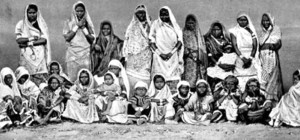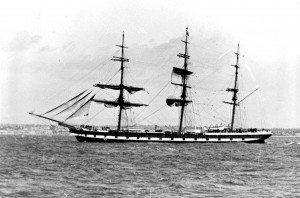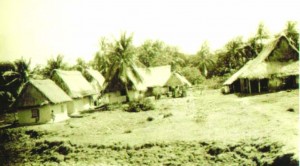Quite a long long time: Some time after arrival
It is always a treat, to see our forefathers and their lifestyle, from the picture we can gather that they liked eating under a shaded tree, and they love eating with their bare hands, sitting in squatting position we can see that maybe they are having dhall and rice and curry...pumpkin or bhajee and or aloo, or katahar, whatever it is, we can see that they are taken up by the tasty meal, and then there is Nanee with her long ankle length dress and with her well starched Romal (headwear) looking carefully to see that none of her fambly, (lol) goes wanting for some more. Looking carefully, there is that pot that contains much more food and Nanee is there to serve, and there is a bucket seems to contain water. Looking at the road in front of Stabroek Market, one would be amazed to see after 92 years it is still all there, just like it is.
Oh the Market itself and the bullock carts with wagon wheels is another story. Double click on the 1922 picture here and there is the complete scenery, wonder how did they get a pic like this in 1922.










